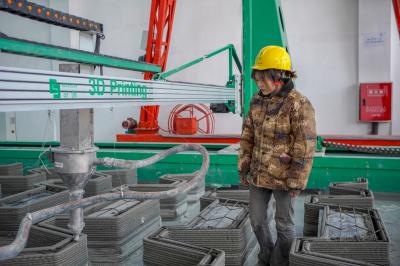(2) Women's rights
Figure 1: Proportions of females in various-level people's congresses and people's political consultative conferences
Women enjoy the chance to participate on an equal footing with men in the management of state and social affairs. Female deputies account for 23.4 percent of all deputies in the 12th NPC, 2.07 percentage points higher than the previous congress. There are 25 female members in the12th NPC Standing Committee, accounting for 15.5 percent of all members. There are 399 female members in the 12th CPPCC, accounting for 17.84 percent of the total. Women deputies who served their tenures from 2011 to 2013 accounted for 24.76 percent of all deputies in the provincial people's congresses, and female members accounted for 22.22 percent in the provincial people's political consultative conferences. In 2015, the proportion of females in the leadership of provincial governments increased notably from that in 2012. In 2014, females in enterprises made up 40.1 percent and 41.5 percent of the members on boards of directors and boards of supervisors, respectively.
Women enjoy the equal right with men to employment. The state implemented the same-age retirement policy for both cadres of section rank in authority organs and public institutions and technical personnel with senior professional titles. In 2014, female employees accounted for 44.8 percent of all people employed across the country. The state implemented an interest-deducted small loan policy, where the government pays part of the interest, to encourage women's employment and self-employment. Since 2009, it has provided 260.704 billion yuan in guaranteed loans for startups, with subsidized interest payments, to aid nearly 10 million women to start businesses or find a job.
The freedom of women in rural areas to enjoy land rights in accordance with the law is basically guaranteed. The state carried out legal publicity and training in grassroots village committees and strengthened the efforts to file, review and rectify village regulations and folk rules. In the process of determining and registering the right to land contracting and management, and in the process of issuing certificates concerning this right, women's rights to land were reflected through registration books and real estate ownership certificates.
The level of health services for women has been raised continuously. In April 2012, the State Council promulgated the Special Rules on the Labor Protection of Female Employees, revising and improving some items including the scope of application and range of forbidden labor, as well as extending statutory maternity leave to 98 days. In 2015, maternity insurance covered 77.12 million women across the country and per capita treatment expenditure reached 16,456 yuan, 2,000 yuan more than in 2014. In 2015, 12.05 million couples who wanted to have babies received free physical tests, with the average coverage rate in target groups amounting to 96.5 percent. During the period of 2011-2015, nearly 50 million pregnant women in rural areas received hospital delivery subsidies, and the rate of women in the countryside giving birth in hospitals increased from 97.8 percent in 2010 to 99.5 percent in 2015. The maternal mortality rate lowered from 30 out of 100,000 in 2010 to 20.1 in every 100,000 in 2015. By the end of 2015, 51.95 million and 7.47 million rural women had free tests for cervical cancer and breast cancer, respectively. |
- Home
- News |Tibet |Exclusive |China |World |Related News |Latest
- Documents |White Papers |Others
- Photo |Politics |Economy & Society |Culture & Religion |Human & Nature |Beautiful Tibet |Other Tibetan-Inhabited Area |Exchanges |Related
- Video |News |Documentary |Micro-Video |Entertainment
- Art
- Tourism
- In Focus
- About Tibet






